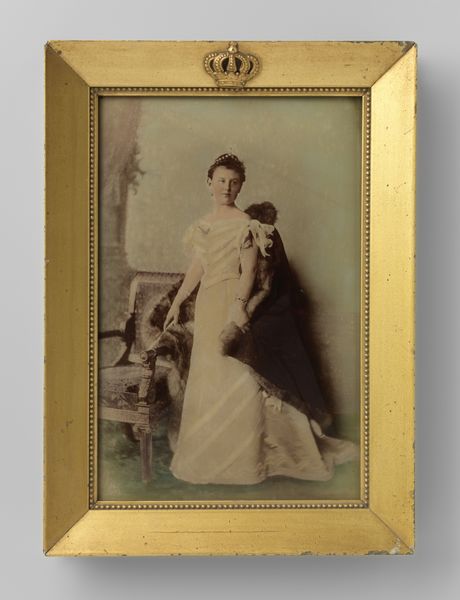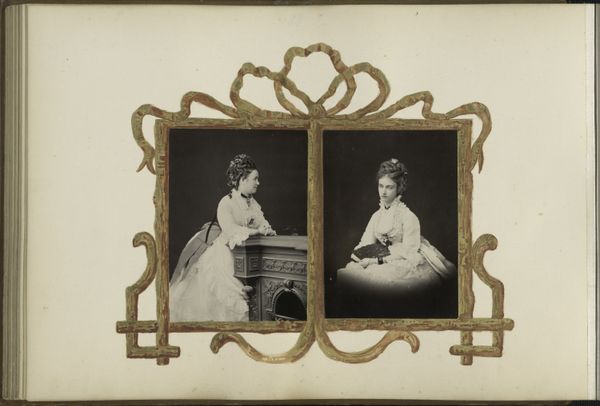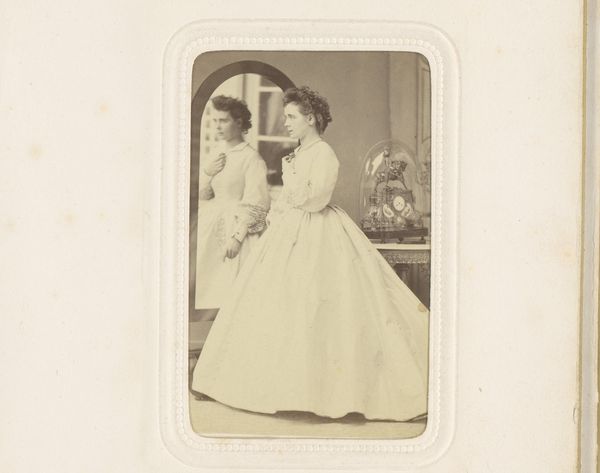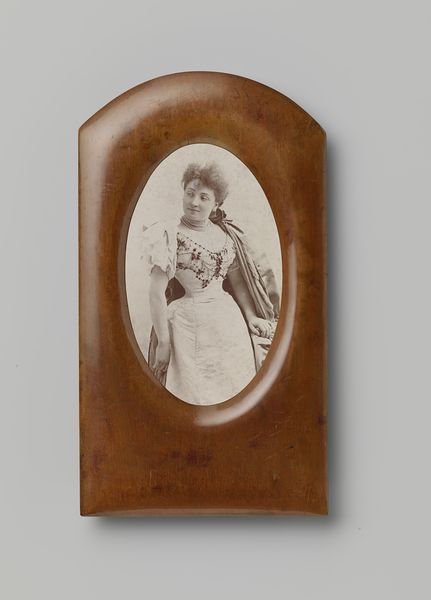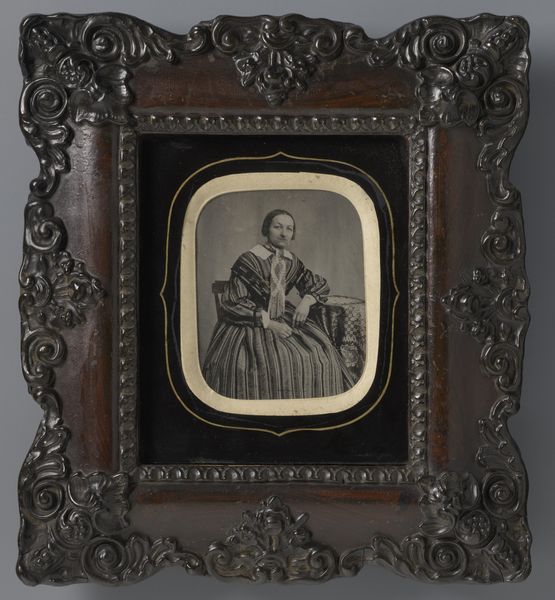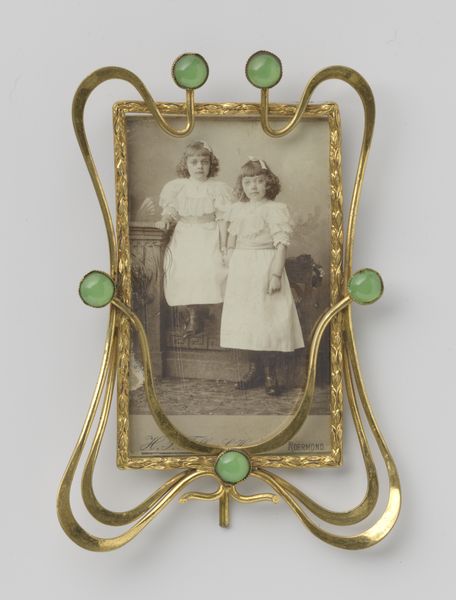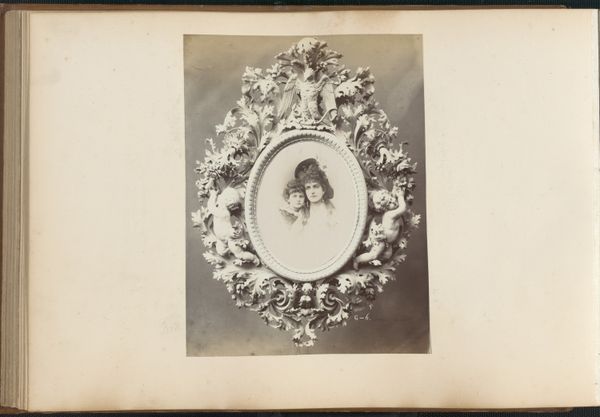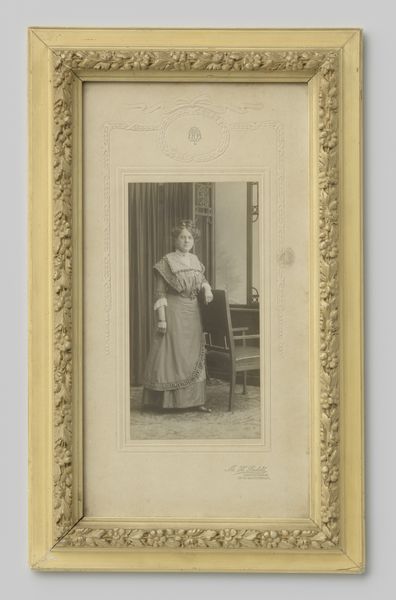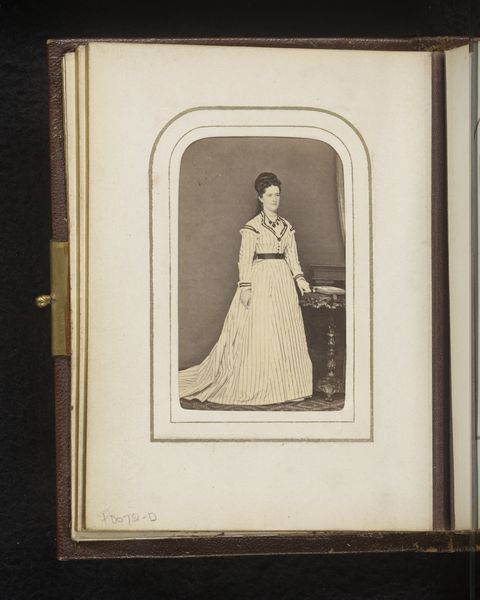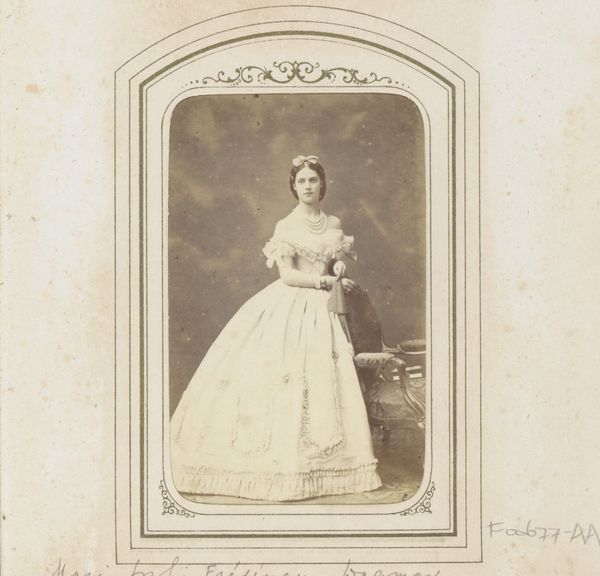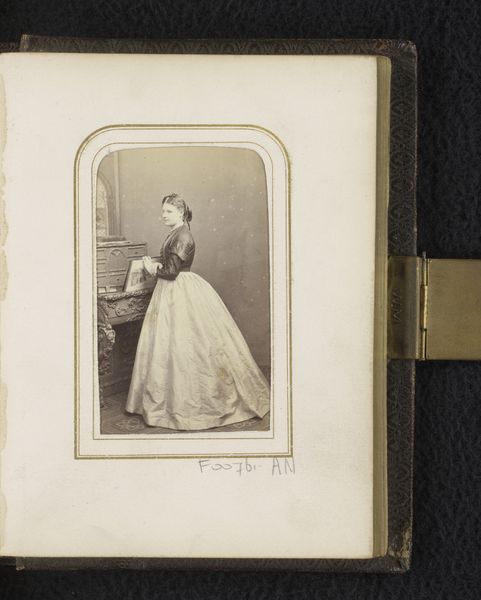
Portret van een onbekende staande vrouw in japon met sleep bij piëdestal, stoel en tafel 1873 - 1890
0:00
0:00
photography
#
portrait
#
still-life-photography
#
photography
#
genre-painting
Dimensions: height 302 mm, width 228 mm, depth 22 mm
Copyright: Rijks Museum: Open Domain
Editor: So, this is "Portrait of an Unknown Standing Woman in a Dress with Train near Pedestal, Chair and Table" by Wilhelm Höffert, taken sometime between 1873 and 1890. It’s a photograph, obviously, and it gives off this very posed, almost theatrical vibe. What do you see in this work? Curator: The production process here is quite revealing. Notice the elaborate dress, the staged setting with its props, even the ornate frame—these weren’t everyday items, but commodities designed to signify status and wealth in a burgeoning consumer culture. The photograph becomes a manufactured image, far from a simple representation. Editor: I see what you mean. It's less about capturing a "real" moment and more about constructing a certain image through material objects. How does the genre, “genre-painting”, and “still-life-photography”, inform this idea? Curator: Exactly. Genre painting often romanticized daily life, but here, the “daily life” is constructed through these manufactured items. And "still-life-photography" allows us to appreciate and acknowledge these mundane elements by aestheticizing it for audiences of the era. Furthermore, think about the photographer's labor; Höffert was running a business, producing these images for a specific market who were acquiring newly manufactured or fabricated items. The consumption habits drive and influence the demand for artworks such as these. Editor: So the photograph itself is a product of industrialization and consumption, reflecting and reinforcing the values of the time? Curator: Precisely. And it blurs the lines between high art, craft, and commercial enterprise. We must ask ourselves; does the craftsmanship elevate the quality, or does commercialism make it inherently unsophisticated? The materials and processes behind this image give us insight into the social context in which it was created and consumed. Editor: This has given me so much to consider! I really thought about only the style when this reflects the societal changes of production, and manufacturing for the consumers. Curator: Indeed! The seemingly simple portrait reveals the complex relationships between art, industry, and social aspiration.
Comments
No comments
Be the first to comment and join the conversation on the ultimate creative platform.
